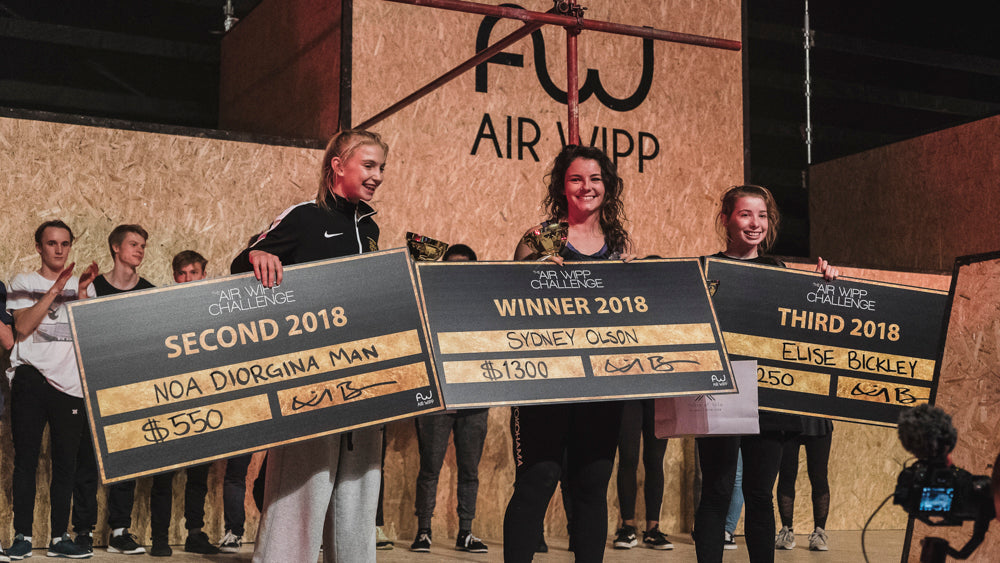Personality Types in Parkour - Why So Many ENFPs?

Happy new year, Farangs! I wanted to kick off this year with something a little bit different; have you ever found yourself looking around at the community and wondering why we all seem to have so much in common? Beyond of course our shared interest in movement, there seems to be a ubiquitous excitement for other things like travel, filmmaking, and entrepreneurship. If the answer is yes, this article may be of some interest to you. I take a look at which ‘personality types’ are prevalent in parkour based on a little study I did a few years ago, and speculate as to why that might be the case - discovering an interesting link in the process.
First off, there’s obviously as many different personalities as there are people in the world. However there are a range of personality traits we all carry to varying degrees, and sometimes those traits configure themselves in such a way that they’re instantly recognisable as something like an archetype. Many psychologists have recognised this at least; and have tried to come up with ways to accurately categorise and catalogue all different personality archetypes they came across.
One such way of sorting different personalities into archetypes is known as the ‘Myers-Briggs Type Indicator’, and is probably the most pop-culture of them all. It was developed by psychologists Myers and Briggs, and based off a psychological model proposed by the famous Carl Jung. The MBTI sorts people into 16 different ‘types’ by asking them to what extent they agree or disagree with 100 different ‘statements’ about themself. By looking at so many statements, the idea is you can start to gauge how extroverted, how open, how agreeable that person is, etc.

So a couple of years ago I was really interested in what (if any), Myers-Briggs types were overly represented in the parkour community. So I made a post in the ‘Parkour Research’ facebook group; asking people to take the Myers-Briggs test and then share their results with me. My idea was to compare the results I got from the people who use the parkour page to the general population to see if the spread of personality types was any different.
It quickly became apparent that one particular personality type was being reported far more often than one would expect; the ENFP. 16 out of the 42 people who responded to the post claimed to be ENFP, and the next biggest group was INTP at 7 respondents out of 42. So those two personality types accounted for over half the total responses - not what you’d expect from a 16 type model! So even with a small sample size, I feel like I stumbled upon something worth investigating further.
| Myers-Briggs Type | # of Respondents | % in Survey | % in Gen-Pop |
| ENFP | 16 | 38.1 | 8.1 |
| INTP | 7 | 16.7 | 3.3 |
| INFP | 3 | 7.1 | 8.8 |
| INTJ | 3 | 7.1 | 2.1 |
| ISFP | 3 | 7.1 | 8.8 |
| ENTP | 3 | 7.1 | 3.2 |
| ISFJ | 2 | 4.8 | 13.8 |
| ISTJ | 2 | 4.8 | 11.6 |
| ESFP | 1 | 2.4 | 8.5 |
| ENFJ | 1 | 2.4 | 2.5 |
| ESFJ | 1 | 2.4 | 12.3 |
| ESTP | 0 | - | 4.3 |
| INFJ | 0 | - | 1.5 |
| ISTP | 0 | - | 5.4 |
| ENTJ | 0 | - | 1.8 |
| ESTJ | 0 | - | 8.7 |
As you can see, 38% of the parkour respondents had the ENFP personality type, compared to around 8% in the general population; and 17% of the parkour respondents were INTP, compared to approximately only 3% of the gen-pop.

So what actually is an ENFP? Well it actually gets pretty technical, so if you’re really interested at this point I urge you to jump onto YouTube and do some of your own research. But for the purposes of this, the ENFP is someone who is the combination of extroverted, intuitive, feeling, and perceiving - which is to say;
- Extroverts in the psychological sense tend to gain energy from social interactions, and project their personalities out into the world for others to receive.
- Intuitives tend to perceive information in terms of how it adds up to a ‘bigger picture’ and therefore tend to be more abstract in their thinking.
- Feelers tend to do their decision making from ‘the heart’ so to speak, appealing to emotion more than pure reason - ‘the head’.
- Perceivers are the opposite of ‘judgers’ and tend not to see the world in black and white terms; preferring to keep their options open / not be tied down to anything.
That all manifests itself as someone who is always looking for new possibilities, and sees the world in terms of its endless and exciting potential. They want to help improve the world, and think the best way they can do that is through capitalising on their own natural gifts; which tend to be communication, observation, and imaginative problem solving. They often have a childlike enthusiasm, but are also very capable of being serious - and in fact are the majority of the time. Is any of this speaking to you, perhaps?
“ENFPs are fiercely independent, and much more than stability and security, they crave creativity and freedom.” - 16personalities.com
ENFPs tend to have a lot trouble focusing on things that aren’t exciting, and have a hard time getting along with the idea of routine. This can lead to high levels of stress and anxiety - often due to what others would call ‘overthinking’. Through their high volume of thought, and novel thinking patterns they can often see both sides of an issue at once, so tend to have trouble with conflict, particularly when it comes to picking sides in an argument.
You can see why this personality type might be attracted to parkour; an activity that is ultimately very independent - only you are in control of the outcome, and yet in its current cultural form comes with tons of opportunities for social interaction - the perfect combination for the ENFP. It appeals to their not-so-inner child; that exploration of new things, and the freedom of there being no set rules - no boring routines to be found here.
It’s also very much a problem solving activity; “How do I move my body in order to start here, and then land there?”. Perhaps training parkour is cerebral enough to arouse the problem solving & intuitive parts of the ENFP’s mind - but also be physically intense, and contain sufficient risk to be a sort of ‘focus meditation’; on one level a momentary escape from the endless chatter of their overactive mind, but on another a means through which to grow to control the mind more and more over time. It’s all a bit of an adventure for the ENFP.
 *Toby Segar from Storror is a classic example of an ENFP!*
*Toby Segar from Storror is a classic example of an ENFP!*
The other highly represented personality in the study was the INTP. Whose main differences on the surface from the ENFP are that they are introverted - meaning they are more focused on their ‘inner world’ and tend to find big scale social interactions very taxing. And the second difference is that they are ‘Thinkers’ instead of ‘Feelers’ - meaning they defer to logic & reason when it comes to decision making, as opposed to ‘what feels right’.
The INTP’s combination of traits manifest themselves into quite a rare personality in the general population. They’re your classic intellectuals, who view the world very logically, and as a place to practice improving their deductive reasoning skills. They also love exploring novel thoughts and ideas though, and often divy out their respect to others in terms of that person’s ability to think well. In that sense they often reject traditional notions of authority, and prefer to look at things objectively in each moment.
Parkour perhaps appeals to their problem solving proclivities, and its structure to their distaste for conventional authority. But one thing I noticed when digging through the literature about all this was that ENFPs and INTPs share something pretty integral; heavy use of a cognitive function called ‘Extroverted Intuition’.
To cut a very long story short, each of the 16 personality types in the Myers-Briggs has something called a Dominant Function, an Auxiliary Function, a Tertiary Function and an Inferior Function. The idea is basically that the order in which the brain deploys its faculties in real time is what gives rise to a lot of differences in personality we see. The Dominant and Auxiliary functions are the most important, and team up to build a picture of the world for us.
Extroverted Intuition happens to be both the dominant function in ENFPs, and the auxiliary function in INTPs. This is actually quite significant because only 3 out of the 16 personality types feature Extroverted Intuition in their dominant or auxiliary functions. So over 60% of the respondents of the study have a personality type that utilises that particular cognitive function. So what does Extroverted Intuition do?
“[Extroverted Intuition] finds and interprets hidden meanings, using “what if” questions to explore alternatives, allowing multiple possibilities to coexist. This imaginative play weaves together insights and experiences from various sources to form a new whole, which can then become a catalyst to action. Extraverted Intuitives also have a very entrepreneurial mindset. [Extroverted Intuition] users see possibilities of what could be all around them. They have a desire to make things happen and “put a dent in the world.” Extraverted Intuitives can get very excited about these possibilities, making them naturally charismatic. Ne users can be inspiring leaders that are trying to be catalysts for change.” - from ENFP Wikipedia Article
So there’s something about that inquisitive mindset, that willingness to ask ‘what if’, and that daring to imagine other possibilities that brings so many people into the sport. It shouldn’t be surprising that such a link exists. You can see it all around, at events, when training with new people. The exciting thing is that this is obviously only the surface of the surface of this kinda stuff. At some point I’ll look a lot deeper into this Extroverted Intuition link!

- - - - -
*I must of course say that there are some pretty big limitations to this study, so please take it all with a pinch of salt. 42 is not a huge number of data points, but just about enough to spot a divergence from the mean in this case. The most major limitation I’d say is that the act of requesting people to take a ‘personality test’ may select for certain personalities more than others - ones who like taking personality tests! The results may well just speak to that more than they do to the parkour population. So there’s definitely things that can be improved.
Nonetheless, I hope you enjoyed the article, and it gave you something to think about. If you would like to help me take this study further, feel free to take the Myers-Briggs test (Link) and post your results down below, it only takes around 10 minutes, and I’ll happily add you to the spreadsheet.
Photo-credits and Sources: biography.com, Storrorblog, 16personalities.com, MBTI Manual by CPP, Myers-Briggs Wikipedia, ENFP Wikipedia, Michael Pierce.

 *Toby Segar from Storror is a classic example of an ENFP!*
*Toby Segar from Storror is a classic example of an ENFP!*


Comments
Elias - January 10 2018
I got ENFJ om the test ?
Jacob Sivertson - January 09 2018
I took the test and got ENFP, -A/-T. I hope that’s all the info you need :) this is an awesome study btw!
Sen - January 08 2018
This is so cool! Such good information I could use on my school project that looks at personality, characteristics and traits while training for free running. Im also an ENFP, and so I found this very intresting :)